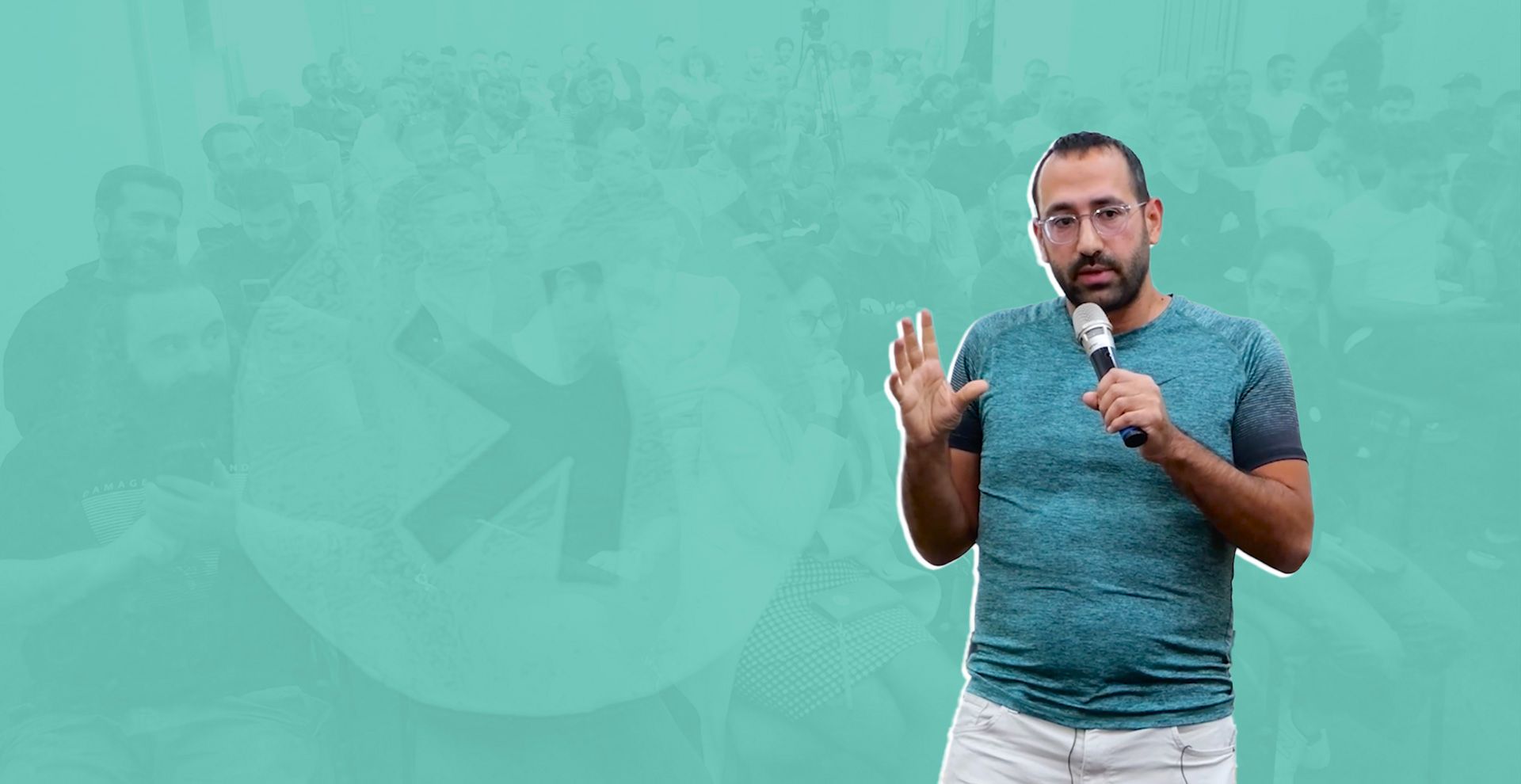The official Kaspa YouTube channel recently posted Part Three of the February 22, 2024, Israel Kaspa meetup, where founder Dr. Yonatan Sompolinsky discussed subjects such as anti-parallelism, MEV, and oracles in decentralized finance (DeFi). The talk was given in Hebrew and translated by Eyal Yablonka and Arnon Lauden. The video was produced and edited by KASMedia’s own Rhubarbian.
A Leaderless Project Driven By Culture
The video of Dr. Yonatan Sompolinsky’s presentation can be found here, below, and on the Official Kaspa YouTube channel. The lecture started on an inspiring note as Dr. Sompolinsky described how the Kaspa project's 'It is possible' attitude and culture facilitated its launch. It was emphasized that this culture was more important than talent, and he thanked developers Sutton and Wyborski for their contributions. A perfect example of this was from lead developer Michael Sutton, who stated:
“I would never say in a development meeting that I am unable to meet a challenge. I would say that I will do it, I will make it work.”

This can-do attitude throughout the project was the key reason it launched without a traditional management structure. Like Bitcoin, the participants' enthusiasm created and sustained a movement toward a better financial system. The culture keeps the project alive, eliminating the need for CEOs, investors, a board, etc. There is no legal entity governing Kaspa, as it is guided entirely by users in a decentralized manner. A truly decentralized project cannot have traditional management.
Where Two Worlds Collide: Hard Money Settlements and Soft Financial Intentions
Dr. Sompolinsky proceeded to explain the current two pillars of crypto. On the one hand, there's Vitalik, the creator of Ethereum (ETH), who aimed to build a platform enabling a wide range of applications using an innovative Turing complete machine. The Ethereum network represents an "anything is possible" attitude, which supports the development of a limitless variety of applications. On the other hand, there's Satoshi, the creator of Bitcoin (BTC), whose primary goal was to function as a hard money settlement layer to facilitate money transfers. Bitcoin was created conservatively, focusing on immutability, resistance to change, and its single task. This is known as the UTXO model, which allows for parallelism, the simultaneous processing of transaction functions. For a deeper understanding, refer to Part One of the meetup video recordings featuring Michael Sutton.
In the UTXO model, users instruct the system by defining the previous state and the desired next state, providing clear instructions for state transitions. However, exact instructions cannot be given in systems designed for quick operations on shared assets, such as in decentralized finance (DeFi). Users can only provide approximate information about the previous state and the intended next state, leading to uncertainty during operations like token swaps on platforms such as Uniswap. This lack of specific instruction characterizes smart contract systems, like Ethereum, which operate based on function calls and allow for "slippage" in trading conditions. Additionally, newer systems are even more open and soft, focusing on user intents rather than specific functions. While such systems offer flexibility, they also pose challenges, which is why Kaspa, like Bitcoin, will leave the base layer intact, with applications being built upon a layer-2 chain.
Soft Money Entering the Realm of Bitcoin
Kaspa's core principles are inspired by Satoshi's design of Bitcoin, which features a minimal scripting language to minimize attack vectors. Bitcoin prioritizes verification over computation as a layer-1 network. Hence, financial systems requiring heavier computations are intended to use layer-2 implementation, like "rollups." The recent trend in the crypto community has seen Bitcoin embracing smart contracts and financial activities, specifically through RISC Zero, a zkVM (zero-knowledge proof virtual machine) system that allows developers to build modular applications in the Rust programming language on top of Bitcoin. To read more about the Rust programming language and Rusty Kaspa, please check out our KASMedia article here.

RISC Zero is pioneering using ZK-Rollups (rollups) on the Bitcoin network. A rollup occurs when transactions are executed off-chain within a layer-2 network as a part of a batch and subsequently recorded on the primary chain (in this scenario, Bitcoin) using a smart contract. This mechanism enables multiple transactions to be consolidated or "rolled into" a single transaction on the layer-1 network. The ZK stands for zero-knowledge proof, a type of cryptography proof where two parties can prove their knowledge of something without revealing the actual knowledge. While rollups have been utilized on the Ethereum network for years, this marks the first implementation on the Bitcoin network, opening up new possibilities in financial applications.
The Future of MEV with Kaspa
Kaspa will follow the path of Bitcoin by maintaining a hard money settlement layer and implementing soft money/smart contracts through layer-2 roll-ups - to merge Ethereum's "anything is possible" approach with Bitcoin's conservative, immutability approach. This strategic approach will avoid harming the security or efficiency of the base layer, avoiding the pitfalls seen with Ethereum. However, contrary to Bitcoin, Kaspa will provide countermeasures to reduce concerns related to MEV. In the world of cryptocurrency, there is the concept of MEV (MEV (Maximal Extractable Value), which encompasses the difference in value perception between miners and users. While users typically see an approximate value, miners can access the precise value. This variance can be exploited by algorithmic and bot trading through tactics like sandwich attacks or front-running, where the bot strategically places the user's transaction between two others, artificially inflating the price.
In most blockchains, there is a monopolistic control of each block. Entities compete to control the round to capture the Maximum Extractable Value (MEV) that occurs between the transaction=0 (not occurring) and transaction =1 (occurred). This comes at the user’s expense as they must cover the extra cost. Kaspa gets around this by utilizing an auction system amongst miners where they bid so that the miner kickback equals the MEV, resulting in an equilibrium — net zero transaction for the user. To read more about this, please see our article recapping Dr. Sompolinsky’s interview with Uphold’s Head of Research.
Kaspa addresses the issue of MEV attacks through a unique approach—an auction system where miners bid for the mining kickback or rebate, ultimately returned to the user, resulting in a net zero cost for them. The frequency of these auctions increases with more blocks per second (BPS), enhancing the likelihood of miner kickbacks matching user rebates. By reducing kickback incentives for bots, Kaspa aims to disincentivize MEV attacks.
The Oracle Problem
For blockchains to support applications, they often need to interact with off-chain data using oracles. Unfortunately, data retrieved from oracles cannot currently be verified. Dr. Sompolinsky explained:
"You need to get data from the outside, like price feeds. You need to know what happened in the world outside the blockchain, and it is impossible to verify that within the system. What I just described is called The Oracle Problem"
This is why Kaspa is prioritizing perfecting its sequencing capabilities rather than immediately developing smart contract functionality to interact with oracles. Smart contracts can potentially be implemented in a layer-2 solution. The current Kaspa network can handle up to 100 BPS through the DAGKnight protocol and can adjust for internet latency proactively without compromising security.
By focusing on and perfecting Kaspa’s core competencies before diving into the next cryptocurrency trend, Kaspa distinguishes itself from many other crypto projects, making it a unique journey. Dr. Sompolinsky emphasized
“There is a wide range of values associated with this movement, and people have different reasons for being here."
Kaspians are always enthusiastic about hearing Dr. Sompolinsky speak, and the comments on this video echo that sentiment, that through Kaspa, "It is possible." Below are two examples of such comments.


To see more talks from the February 2024 Kaspa meetup, please See Part One featuring Michael Sutton, and Part Two, featuring Shai Wyborski.
Enjoyed reading this article?
More articles like thisComments
No comments yet!




